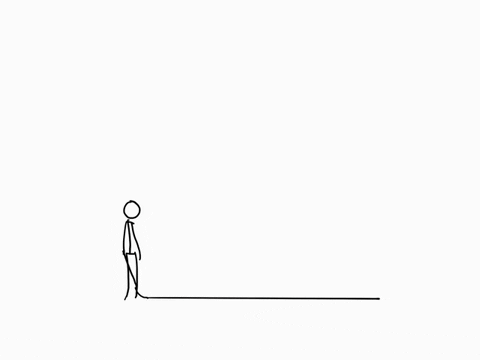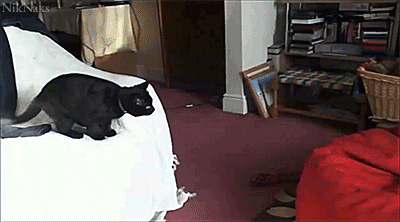“The greatest enemy of knowledge is not ignorance; it is the illusion of knowledge.” — Stephen Hawking.
TLDR: The “bullwhip effect” and the “dead cat bounce” are supply chain management and finance concepts, respectively. They both show how misreading signals and making quick judgments can lead to costly errors. These concepts remind us of the importance of correct interpretation of even accurate information and the need for collaboration across an organisation’s departments, suppliers and customers to understand what is actually going on with market demand.
The Bullwhip Effect

The bullwhip effect describes the fluctuation or distortion in the information within a supply chain. Imagine a bullwhip cracking: the handle (customer demand) moves slightly, but the tip (OEM orders) whips wildly. The term was coined in the 1990s by supply chain experts to interpret perplexing inventory fluctuations becoming magnified as they ripple upstream.
Origin Story
The story behind the bullwhip effect’s origin involves Procter & Gamble (P&G). In the early 1990s, P&G grappled with erratic demand for its diapers. The company believed customer demand was unstable and frequently changed its production schedules. These changes, while well-intentioned, had a cascading and growing effect on P&G’s producers. The diaper makers, unable to decipher P&G’s actual demand, faced a significant challenge in forecasting and often overproduced, leading to excessive inventory.
The revelation came when P&G executives collaborated with their producers and traced the issue back to their in-house ordering patterns, which exhibited substantial fluctuations unrelated to actual demand. This key realisation led to the coining of the term “bullwhip effect.” P&G’s experience became a cautionary tale for supply chain practitioners worldwide, emphasising better communication and collaboration among supply chain partners to mitigate this detrimental phenomenon. Eventually, just-in-time production methods were introduced to avoid unwarranted production of goods into inventory.
The Dead Cat Bounce*

Switching gears from supply chains to finance, the term “dead cat bounce” is as macabre as it sounds (thanks to Paul Nunes for the term from his brilliant series of books, covered here in depth.) This phrase describes a temporary and slight recovery in the price of a declining asset, like a stock or a market, before it resumes its downward trajectory. The logic is that even a dead cat will bounce if it falls from a sufficient height, but it’s still destined to go down again.
Origin Story
The origin of the “dead cat bounce” is shrouded in urban legend, but it’s often attributed to traders on Wall Street. The story goes that during the stock market crash in 1987, a trader opined that a rally might not signal the end of a significant decline — that even a dead cat would bounce if dropped from a great height. This morbid analogy stuck, and traders began using it to describe brief upticks in a generally declining market. It serves as a stark reminder that not every upward movement in the market signals a genuine recovery, and investors must exercise caution and not misread these temporary fluctuations as a sign of lasting growth.
Two Dead Cats: “Just Give Me a Sign!”
Leading companies are most in danger of a dead cat bounce. As a market matures, failing companies become easy pickings for the market leader. The market leader’s revenues grow, and profits increase. This can make the leader look like an improving company for a while. This surge in profitability can be a contradictory signal of disruptive change. Eventually, once the market is consolidated, customer abandonment and inflexible fixed assets can quickly return a company to losses, and it becomes evident to investors that the industry has failed.
Blockbuster experienced a dead cat bounce as it faced competition from online streaming services like Netflix. In the early 2000s, Blockbuster’s stock price briefly increased as the company attempted to adapt to changing consumer preferences by launching an online rental service. However, this “bounce” was short-lived, and Blockbuster eventually filed for bankruptcy as its traditional business model became obsolete.
Another poster child of disruption, BlackBerry (formerly Research In Motion), encountered a dead cat bounce during its decline in the smartphone market. As BlackBerry’s market share eroded due to competition from touchscreen smartphones, there were brief moments of optimism when new BlackBerry models were released. These releases led to short-lived stock price increases and hopes of a turnaround. However, BlackBerry ultimately lost its dominance.

Though born in different industry domains, the stories of the bullwhip effect and the dead cat bounce underscore a common theme — misreading signals can have costly consequences. P&G’s realisation of the bullwhip effect prompted better supply chain management practices, while the concept of the dead cat bounce continues to guide investment decisions. In a world filled with intricate signals and noise, these examples are reminders that accurate interpretation and collaboration are essential to navigate the complexities of supply chains and financial markets effectively.
(*Sucker Rally: a deceptive increase in market prices that can lull investors into thinking the market is recovering. As with a dead cat bounce, it’s often a temporary illusion, reinforcing the need for careful analysis.)
THANKS FOR READING
This week, we launch a new series on The Innovation Show with the world-renowned supply chain expert Yossi Sheffi. This is part 1 of a 3-part series on his book “The Magic Conveyor Belt: Supply Chains, A.I., and The Future of Work.”
Misreading the Signals: Bullwhips, Dead Cats and Sucker Rallies was originally published in The Thursday Thought on Medium, where people are continuing the conversation by highlighting and responding to this story.